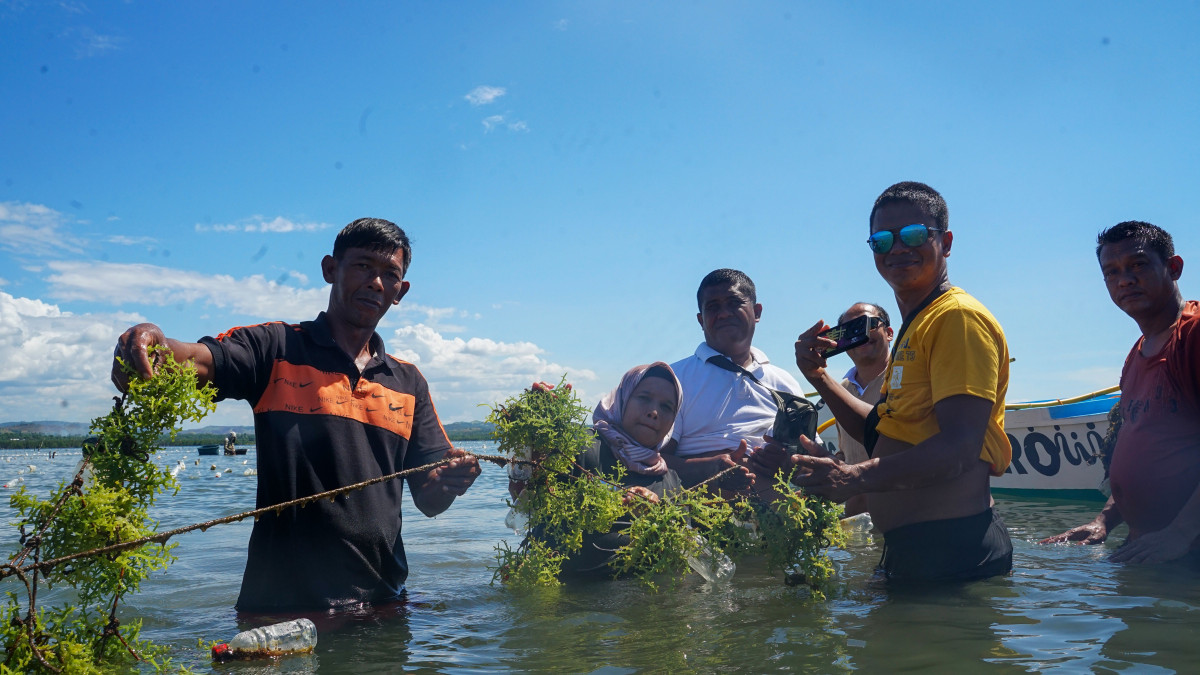Why Training Seaweed Farmers Is Key to Better Carrageenan and Sustainable Livelihoods
Published: Jun 9, 2025 Reading time: 4 minutes Share: Share an articleThe Philippines was once a global leader in seaweed production. But due to extreme weather conditions, rising productions cost and declining seaweed quality the country lost its lead. Now Filipino farmers face challenges that threaten their livelihoods. In Tawi-Tawi, one of the country’s top seaweed producing provinces, we support farmers in securing their livelihoods by teaching them sustainable farming methods.

Carrageenan may not be a household name, but it’s an essential ingredient found in many everyday products. It keeps your ice cream creamy, your toothpaste firm, and your lotions smooth. Extracted from red seaweed, carrageenan is widely used in food, medicine, cosmetics, and even industrial goods and the Philippines is one of the leading sources of the seaweed that produces it.
The Philippines ranks fourth globally, while, back in the 19190s, it was the world’s top producer of carrageenan-producing seaweed and carrageenan processing. Major international companies like Cargill, Kelco, Kerry, and CEAMSA set up local processing plants, while homegrown businesses like Shemberg thrived. At its peak, over 90% of the seaweed harvested in the Philippines was processed locally.
But over time, challenges emerged. Indonesia surpassed the Philippines in seaweed production, and later China overtook the country in carrageenan exports. Devastating typhoons, rising production costs, and declining quality all contributed to a loss in leadership. By 2018, the Philippines was even importing raw seaweed to meet industry demand.
In Tawi-Tawi, the country’s top seaweed-producing province, the effects have been especially damning. Major buyers like MCPI Corporation have stopped sourcing seaweed from the area due to quality concerns.
Increasing yields while restoring marine ecosystems
Despite producing 66% of the Philippines’ total seaweed output many Tawi-Tawi farmers face dropping prices and a lack of reliable buyers, putting their livelihoods at risk.
This is where we step in; through BAEP-LEAP (Bangsamoro Agri-Enterprise Programme – Leveraging and Expanding Agri-Aqua Production), funded by the European Union, we support seaweed farmers in Sulu and Tawi-Tawi by improving harvest quality and raising awareness of seaweed’s true market value.
Through training in regenerative seaweed farming, we promote sustainable methods that increase yields while restoring marine ecosystems.
For farmers like Darmial, the training has been eye-opening.
To deepen their understanding, farmers visited MCPI’s processing plant to see how seaweed is transformed into carrageenan.
The farmers we trained also visited a regenerative farm in Talibon, Bohol Province, where they saw how sustainable farming improves yields and keeps the seas healthy.
BAEP-LEAP's support doesn’t stop with training.
Now, farmers like Darmial and Marwan are leading by example. They’ve now practice regenerative methods in their own nurseries. They’re also eager to share their new knowledge with fellow seaweed farmers.


